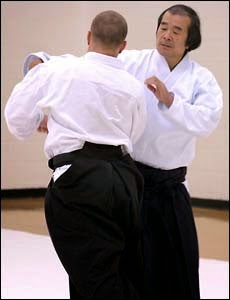Ichi Go, Iche E 一期一会 "one time, one meeting" is a Japanese term that describes a cultural concept. It's often translated as, "for this time only," "never again," or "one chance in a lifetime." It is sometimes used in the martial arts to admonish students not to stop in the middle of a technique to try again. Remember that in a life or death struggle, there is only one chance. When we practice aikido we should try to stay focused, to help us remember that each movement, each moment, is singular, decisive. Most of the music I play is something I call "practicing," as if the only "real music" is the gig, the session, the lesson. "Ichi Go, Ichi E" reminds me that everything I play is unique. It helps me listen better to the sound of what I am playing, enjoy it, and ultimately be a better musician for it. By focusing on how we experience each moment, we can open ourselves to a richer life. Each moment is uni







